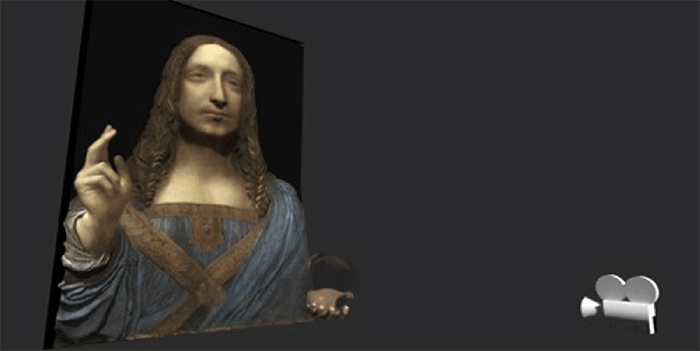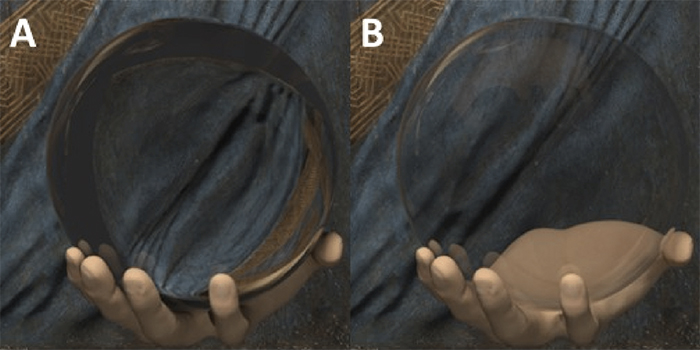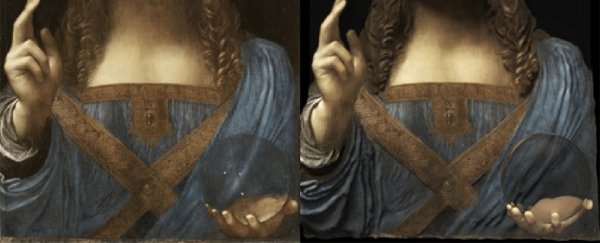Scientists may have solved one of the great Leonardo da Vinci painting mysteries – why the glass orb in the Salvator Mundi painting (dated to around 1500 CE) shows no signs of the refraction and reflection of light that might be expected.
The answer, according to computer models run by a team from the University of California, Irvine, is that in the painting Jesus is holding a hollow rather than a solid orb, which would have appeared the way that da Vinci depicted it.
This idea of a hollow orb has been mooted before by art historians, alongside alternative hypotheses involving rock crystal, but now an advanced 3D rendering has shown that da Vinci's daubing accurately represents a hollow glass object.
 (Laing et al., arXiv.org, 2019)
(Laing et al., arXiv.org, 2019)
"Our experiments show that an optically accurate rendering qualitatively matching that of the painting is indeed possible using materials, light sources, and scientific knowledge available to Leonardo da Vinci circa 1500," write the researchers in their paper.
The robes of Christ shown behind the orb in Salvator Mundi (Latin for "saviour of the world") aren't distorted or magnified, while there are also three white spots painted on the surface. Some historians have suggested that da Vinci deliberately painted the orb in an unrealistic way.
However, using a computer graphics technique known as inverse rendering – where three-dimensional details of a scene are extrapolated from a two-dimensional image – the scientists were able to recreate what da Vinci painted hundreds of years ago.
Based on the team's calculations, the orb had a radius of 6.8 centimetres (2.7 inches) and was 25 centimetres (9.8 inches) in front of the subject of the painting. The orb couldn't be more than 1.3 millimetres (0.05 inches) thick, the analysis suggests.
The shadows in the painting suggest a strong light source from above, as well as more general diffuse light, according to the computer models. The research has yet to be peer reviewed, but the computer analysis matches what's on the canvas.
From the folds of Christ's gown as they pass behind the orb, it seems da Vinci had a solid knowledge of how glass orbs worked – indeed he was known to be studying optics at the time. Most of the folds aren't distorted, but one does show some changes behind the orb.
 Solid orb (left) vs hollow orb (right). (Laing et al., arXiv.org, 2019)
Solid orb (left) vs hollow orb (right). (Laing et al., arXiv.org, 2019)
The painting – which sold for $450 million in 2017, making it the most expensive painting in the world – is still surrounded by plenty of controversy, with several scholars suggesting that da Vinci only contributed certain sections to the painting, or that he wasn't involved at all.
That the glass orb is accurately depicted adds credence to the claims that da Vinci did indeed have a hand in the composition – and that he used his knowledge of optics and lights to produce a true representation.
"This analysis suggest that Leonardo understood these optical properties of hollow balls and how to avoid distracting optical distortions from the rendering of the folds of the subject's robe," write the scientists in their paper.
The research has been published on the pre-print website arXiv.org.
